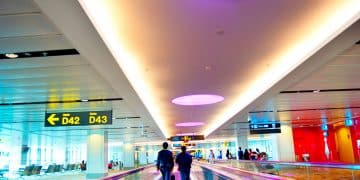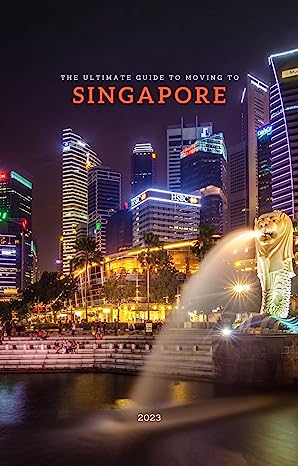The Port of Singapore is situated on the southern end of the Malay Peninsula in Southeast Asia. Renowned for its strategic position along key shipping routes, it serves as a pivotal maritime hub for international trade. Managed by the Maritime and Port Authority of Singapore (MPA), this bustling port is a linchpin in the global shipping network, offering unparalleled connectivity to over 600 ports in 123 countries.
With a comprehensive range of terminals that include Tanjong Pagar, Keppel, Brani, Pasir Panjang, Sembawang, Jurong, and the newer Tuas, the Port of Singapore is equipped to handle various types of vessels from container ships to bulk carriers. Not only is it the world’s second-busiest port by total shipping tonnage, but it also plays a crucial role in container transhipment, being one of the busiest in this segment.
Key Takeaways
- The Port of Singapore is a key maritime capital positioned on the Malay Peninsula.
- It’s under the purview of the Maritime and Port Authority of Singapore and serves over 600 ports worldwide.
- The port boasts a diverse range of terminals capable of accommodating multiple vessel types.
Strategic Location and Overview
The Port of Singapore boasts a prime location at the southern tip of the Malay Peninsula and is a key maritime gateway for Southeast Asia. This bustling port, significant in its historical roots, serves as a vital connector between the Indian Ocean and the Pacific Ocean via the Singapore Strait.
Geographical Position
The Singapore Strait brings critical advantage as it is one of the busiest waterways, facilitating a massive volume of international trade. Singapore itself is strategically nestled in Southeast Asia, enhancing its accessibility to regional and long-haul international shipping routes. The port is spread across various areas including Tuas, Keppel, Tanjong Pagar, Brani, Jurong, and Sembawang. These locales are integral to the port’s operations, offering deep-water harbours and extensive docking facilities.
Historical Significance
Incepted by Sir Stamford Raffles during the British Colonial Era as a Free Port, Singapore’s port has been pivotal in shaping the region’s trade dynamics. It swiftly grew into a vital trade link between the East and West, capitalising on its geographical perk. The historical context of having a free port status since the establishment has been one of the sustaining factors in the port’s enduring success and continuous growth over the centuries.
Infrastructure and Operations
The Port of Singapore boasts a sophisticated infrastructure with seamless operations that cater to the high demand of global maritime trade. Its strategic location and advanced facilities underscore its status as one of the world’s leading maritime hubs.
Modern Terminals
The Port of Singapore operates several modern terminals that are equipped to handle the immense throughput of container traffic. Key players such as PSA Corporation Limited and Jurong Port manage these terminals, which are designed to accommodate all vessel types, including those requiring deep-water berths. Among the notable facilities are the terminals at Pasir Panjang, Tanjong Pagar, Keppel, and Brani.
- Container Terminals: PSA oversees terminals which are the lifeblood of the port’s container handling capacity. These terminals are equipped to handle a substantial number of Twenty-Foot Equivalent Units (TEUs).
- Pasir Panjang Terminal: This terminal stands out for its advanced berthing spaces that can accommodate the largest container ships in operation today.
Automation and Efficiency
Automation is central to the Port of Singapore’s operational efficiency, with the deployment of automated cranes and other state-of-the-art technologies. These advancements have considerably increased the handling capacity and have streamlined the logistics processes within the port facilities.
- Automated Cranes: These cranes serve as a backbone for loading and unloading processes, reducing downtime and enhancing productivity.
- Efficiency: The use of automation technologies has significantly improved the handling rates and reduced vessel turnaround time, making Singapore Port one of the most efficient ports globally.
Expansion Projects
Ongoing expansion projects are set to solidify the Port of Singapore’s position in the maritime industry. Notably, the development of the Tuas Mega Port is a major step forward.
- Tuas Port: By the 2040s, all operations at Pasir Panjang Terminal are expected to be consolidated at the new Tuas Port, which will become one of the world’s largest fully automated terminals as projected by the Maritime and Port Authority of Singapore (MPA).
- Tuas Mega Port: This ambitious project will enhance the port’s container handling capabilities, consolidate operations for better efficiency, and provide additional berths, thereby enhancing the overall TEU capacity of the port.
Economic Impact and Trade
Singapore’s Port stands as a pivotal force in global maritime trade, bolstering its status as a nexus for international trade and logistics. It has affirmed its position as one of the busiest ports in the world, handling immense shipping tonnage and a staggering number of Twenty-foot Equivalent Units (TEUs).
Transshipment and Connectivity
As the cornerstone of Singapore’s economic landscape, the Port of Singapore excels in container transhipment, owing to its strategic positioning at the crossroads of major shipping lanes. This has established the port as a premier transhipment hub, vital for global connectivity and the seamless transportation of goods.
Cargo and Commodities
Goods of diverse nature frequent the docks, ranging from raw materials to finished products. Singapore’s port facilities within the Free Trade Zone expedite the efficient transfer and storage of commodities, underscoring its role in both regional and international markets.
Notable Commodities:
- Raw Materials: Vital for manufacturing
- Consumer Goods: Integral to global supply chains
With a focus on advanced logistics solutions, the Port ensures that varied cargoes are processed with precision, maintaining Singapore’s economic vitality and affirming its status in maritime trade.
Regulatory and Security Aspects
The regulatory framework of the Port of Singapore is centred around ensuring the highest levels of security and adherence to international standards. The governing bodies implement stringent regulations to maintain order, safety, and environmental protection within this bustling hub.
Governing Bodies and Standards
The Maritime and Port Authority of Singapore (MPA) is the primary agency that oversees the operations and security of the Port of Singapore. It ensures compliance with the International Ship and Port Facility Security (ISPS) Code, which is a set of measures to enhance the security of ships and port facilities. The MPA’s regulatory functions help to establish Singapore as a premier global hub port, while they actively maintain a robust legislative system to safeguard against any maritime security threats.
Safety and Environmental Considerations
The Port of Singapore takes safety and sustainability very seriously. The MPA has put in place comprehensive marine safety measures that cover everything from vessel traffic management to emergency response protocols. Through its regulations, it promotes sustainable practices to minimise the environmental impact of port activities. The adherence to these regulations ensures that the Port of Singapore not only meets but often exceeds international environmental and safety standards, making it a leader in port safety and security.
You may also like…
Where Is The Merlion In Singapore Located?
Where Is The Singapore Flyer Located?
Where Is Marina Bay Sands Located In Singapore?
Where Is The Port Of Singapore Located? – Frequently Asked Questions
This section addresses some of the most pertinent queries regarding the Port of Singapore, from its rich history to the strategic advantages offered by its location.
What is the significance of Pasir Panjang in the context of Singapore’s ports?
Pasir Panjang Terminal is a key component within the Port of Singapore’s infrastructure, serving as a critical point for container handling and shipping operations, thanks to its advanced facilities.
What is the designated code used for identifying Singapore Port in international trade?
In international trade, the Port of Singapore is identified by the UN/LOCODE SG SIN, which ensures a standardised code system for ports globally.
Could you trace the historical development of trading ports in Singapore?
The history of Singapore’s ports can be traced back to its modest beginnings at Boat Quay, evolving into a global trading hub over time with continual expansion and modernisation.
What underlying factors contribute to the success of Singapore’s port?
Singapore’s port owes its success to various factors including its strategic location, state-of-the-art facilities, and the Maritime and Port Authority of Singapore’s commitment to port growth and development.
How do the geographic coordinates of Singapore’s main port enhance its strategic positioning?
Located on the southern tip of the Malay Peninsula, Singapore’s main port benefits from its proximity to major shipping lanes, cementing its role as a crucial transshipment and trade link between the East and West.




